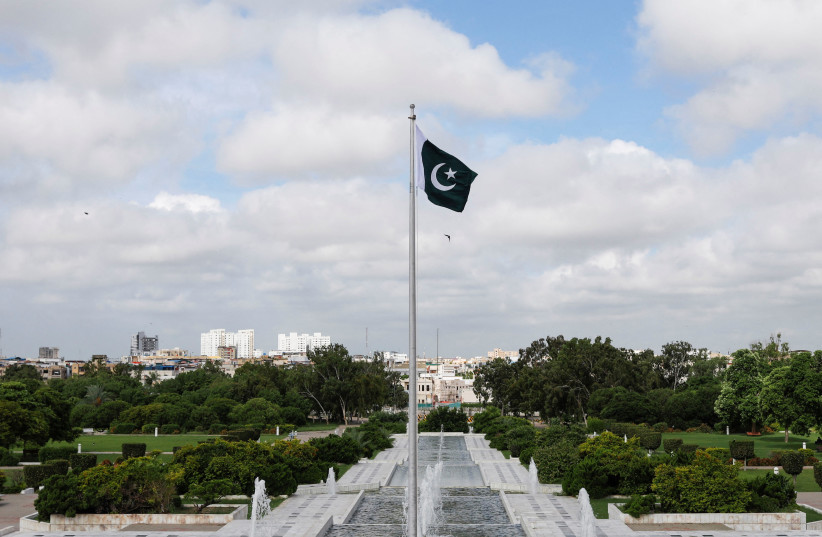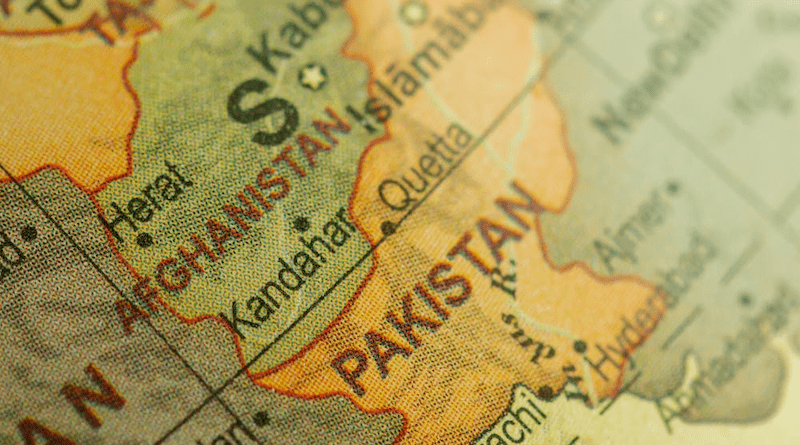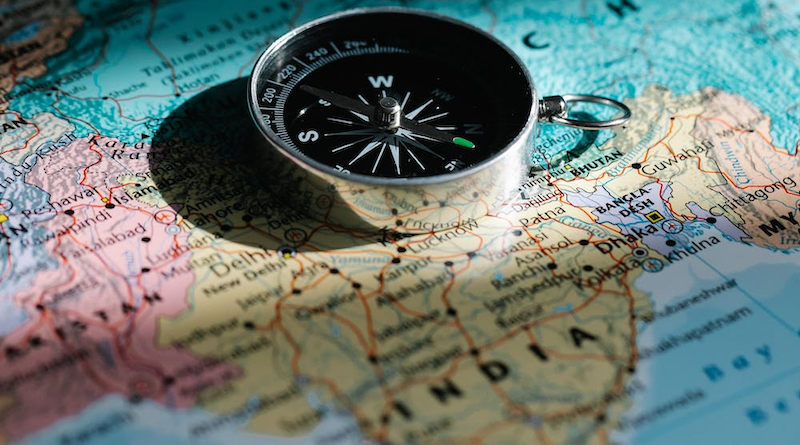India
No, Pakistan's non-Muslim population didn't decline from 23% to 3.7% as BJP claims
During the debate on the Citizenship Amendment Bill in Parliament, the BJP repeatedly claimed that population of religious minorities in Pakistan has declined from 23% in 1947 to 3.7% in 2011. Analysis of official data however shows this argument is faulty.
Mukesh Rawat New Delhi December 12, 2019 UPDATED: December 12, 2019 23:59 IST

It is a fact that religious minorities have been persecuted and face discrimination in Pakistan and Bangladesh, but the figures quoted by the BJP are untrue. (Photo: Reuters file)
While moving the Citizenship Amendment Bill in the Lok Sabha on Monday, Union Home Minister Amit Shah said at the time of Independence, non-Muslims comprised 23 per cent of Pakistan's population and that by 2011 their share was reduced to 3.7 per cent.
With regards to Bangladesh, he claimed that in 1947, non-Muslims comprised 22 per cent of its population and their share in 2011 fell to 7.8 per cent.
Amit Shah's verbatim quote in Hindi: "1947 main Pakistan ke andar alpasankhyakon ki aabadi 23 pratishat thi, aur 2011 main wog ghat kar 3.7 pratishat ho gayi. Bangladesh main 1947 main aplsankhyakon ki aabadi 22 pratishat thi aur 2011 main wo kam ho kar 7.8 pratishat ho gayi. Kahan gaye ye log? Ya toh unka dharm parivartan hua. Ya wo maar diye gaye, ya bhaga diye gaye, ya Bharat aa gaye."
(Refer to Amit Shah's speech from the video on his Twitter profile below from 9min 40sec onwards for this quote.)On Wednesday, while moving the Citizenship Amendment Bill in the Rajya Sabha, Amit Shah reiterated his claim, saying Pakistan and Bangladesh have seen a decline of up to 20 percentage points in their populations of religious minorities.
Replying on Citizenship (Amendment) Bill 2019 in Lok Sabha. https://t.co/L2A9ZcbCny
Amit Shah (@AmitShah) December 9, 2019
"Whan ke alpshankyak kahan gaye? Ya toh vo maar diye gaye, ya unhone Bharat main sharan liya (Where did the minorities disappear in Pakistan and Bangladesh? Either they were persecuted or they took shelter in India)," Amit Shah said in the Rajya Sabha.
This has been a position maintained by the Bharatiya Janata Party and its supporters. To highlight the persecution of religious minorities in Pakistan (particularly of the Hindus), the BJP and right-wing Hindu organisations in India have been citing similar figures to argue that non-Muslims were brutally persecuted in an Islamic Pakistan after the Partition of 1947.
But how true are these numbers? Has population of non-Muslims in Pakistan really shrunk to 3.7 per cent today from a high of 23 per cent? What is the basis of this claim?
IndiaToday.in's analysis of Pakistan's Census data shows that these claims are faulty.
TRACING PAKISTAN's NON-MUSLIM POPULATION
Pakistan got its identity as a separate nation on August 14, 1947. Back then, Pakistan also included present-day Bangladesh which was known as East Pakistan. These two territories were carved out as a new independent nation with Islam as its state religion.
There is no authentic and reliable official data on the religious composition of Pakistan's population in 1947. While presenting the data on religious composition of Pakistan in 1947 in his speech, Home Minister Amit Shah did not mention his source either. A similar figure was mentioned in an article published by the Hudson Institute in 2013. The artilce 'Cleansing Pakistan of Minorities' was written by Farahnaz Ispahani, former member of Pakistan's Parliament. But she too did not mention the source of her figures.
The preceding figures on Pakistan's religious composition that are available are from Census 1941. But since it was conducted in an undivided India, referring to it is futile as it doesn't reflect the ground situation created just after the bloodied Partition in 1947.
After its formation, the first census in Pakistan was carried out in 1951. This census included both East and West Pakistan.
As per this census, the share of Muslims in Pakistan's overall population in 1951 was 85.80 per cent, while the share of non-Muslims was 14.20 per cent. (Pakistan here refers to East and West Pakistan taken together).
What is important to note in Census 1951 is that Pakistan's non-Muslim population wasn't evenly distributed.
In West Pakistan, the non-Muslim population was just 3.44 per cent, while in East Pakistan (today's Bangladesh) they had a significant share comprising 23.20 per cent of the population therein.
As per Census 1951, share of Muslims in Pakistan's overall population was 85.80%, while share of non-Muslims was 14.20%.
To understand the change in population of religious minorities in present-day Pakistan, we need to separately analyse the trends in West Pakistan and East Pakistan (now Bangladesh).
WHAT HAPPENED IN WEST PAKISTAN
In 1951, Muslims comprised 96.56 per cent of the total population in the territory that is today known as Pakistan. The table below details the religious composition of each of Pakistan's five provinces.
The next census in Pakistan was carried out in 1961 which said the non-Muslim population in West Pakistan had reduced to 2.83 per cent of West Pakistan's total population.
By 1972 when Pakistan carried out its third census, East Pakistan had been liberated and was now known as Bangladesh.
The 1972 census shows non-Muslims in Pakistan comprised 3.25 per cent of the total population. This was higher than their share in 1961. By the time the next census was carried out in 1981, Pakistan's non-Muslim population saw a miniscule rise--from 3.25 per cent in 1972 to 3.30 per cent in 1981.
Following Census 1981, Pakistan did not carry out a fresh census for more than 15 years and the next census was carried out in 1998.
As per this census, Pakistan's non-Muslim population was 3.70 per cent of the total population in 1998.
Recently, though Pakistan carried out a fresh census in 2017 but its religious data is yet to be released.
ALSO READ | Abduction, oppression and forced conversion is fate of Hindus in Pakistan
Thus in a nutshell, based on Pakistan's census data we find:
1) Population of non-Muslims was never 23 per cent of Pakistan's total population.
2) Even in undivided Pakistan, share of non-Muslim population never even touched the 15 per cent mark. (The highest was 14.2 per cent in 1951.)
3) When it comes to today's Pakistan (i.e. erstwhile West Pakistan), non-Muslims comprised 3.44 per cent of the region's population in 1951.
4) Census data show that share of non-Muslims in Pakistan has hovered around 3.5 per cent over the decades.
THE SITUATION IN EAST PAKISTAN (today's BANGLADESH)
Now, since the trend of non-Muslim population in the region that comprises Pakistan today is clear, we shall look at what happened in East Pakistan, which in 1971 became Bangladesh.
Pakistan's census data show that non-Muslims formed 23.20 per cent of East Pakistan's total population in 1951.
Over the years, this share has indeed reduced significantly, but still not as much as the BJP has claimed.
By 1961, share of non-Muslims in East Pakistan had reduced to 19.57 per cent, In 1974 it further reduced to 14.60 per cent; in 1981 to 13.40 per cent; in 1991 to 11.70 per cent and in 2001 to 10.40 per cent.
Bangladesh's latest census carried out in 2011 revealed that the share of non-Muslims has gone below 10 per cent of the country's overall population. In 2011, non-Muslims comprised 9.60 per cent of Bangladesh's population.
Thus, between 1951 and 2011, population of non-Muslims shrunk from a high of 23.20 per cent to a low 9.40 per cent.
ALSO READ | 1,792 persecutions on minorities in 11 months in Bangladesh, claims Hindu alliance
WHERE BJP'S CLAIM IS WRONG
Having separately examined the trend in population change in the regions that are today known as Pakistan and Bangladesh, let's examine the claims made by the BJP.
The BJP has claimed:
1) Population of non-Muslims in Pakistan has reduced from 23 per cent at the time of Independence to 3.7 per cent in 2011.
2) Population of non-Muslims in Bangladesh was 22 per cent at the time of Independence and has been reduced to 7.8 per cent in 2011.
3) This decline in population share of non-Muslims in these two Islamic countries was due to widespread religious persecution.
As discussed earlier, there is no official data on the religious composition of Pakistan at the time of Partition (then including today's Bangladesh). The closest official figures available are from Census 1951. What happened between 1947 and 1951 is subject to individual interpretation.
It is a fact that thousands of non-Muslims were persecuted in Pakistan at the time of Partition in 1947 (just as thousands of Muslims were persecuted in India). Besides this, thousands of Hindus and other religious minorities left Pakistan and entered India in 1947 and thousands of Muslims left India to become Pakistani citizens. This widespread migration and killings did alter the religious composition of the regions concerned in comparison to the situation before Partition. But the exact scale of these persecutions and migration remains unknown in absence of data, and hence the population share of non-Muslims in Pakistan in 1947 remains unknown.
Taking Pakistan's Census 1951 as benchmark for our analysis, we find that while raising the issue of religious persecution in Pakistan and Bangladesh, the BJP mixed-up data for the two regions.
Firstly, it said non-Muslims once comprised 23 per cent of Pakistan's population. The fact rather is that non-Muslims comprised 23 per cent of only East Pakistan's population, not the entire country. Taken together (East plus West Pakistan), share of non-Muslims was 14.20 per cent (the highest ever) in 1951.
Secondly, the BJP claimed that share of non-Muslims reduced from 23 per cent to 3.7 per cent in Pakistan. This too is incorrect because share of non-Muslims in Pakistan has hovered around 3.5 per cent from the first census onwards.
1951: 3.44 per cent1961: 2.80 per cent1972: 3.25 per cent1981: 3.33 per cent1998: 3.70 per cent
Fourthly, BJP has argued that religious persecution was the reason for decline of non-Muslim population in Bangladesh. There is no denying that religious minorities were brutally persecuted for decades in East Pakistan and later also in Bangladesh. It is a fact that hundreds of them were raped, murdered and forcibly converted into Islam.
But besides religious persecution, there were other strong factors that contributed in out-migration of non-Muslims from Bangladesh, which too resulted in decline of their share in population.
Persecution based on language in Bangladesh and greener economic opportunities in India have been strong push factors in Bangladesh for thousands of illegal immigrants who entered and settled in India.
These illegal immigrants are not just Hindus, but also comprise a sizable number of Bengali Muslims. Thus out-migration from Bangladesh has been a multi-factored phenomenon. Ascribing it entirely to persecution of religious minorities is erroneous.
This, however, does not reject the fact that religious minorities have been persecuted, raped and forcibly converted in Pakistan and Bangladesh. In many instances, such prosecution had explicit or tacit approval of the government in power.
This was particularly true in during decades of military rule and even after 1971 when East Pakistan was liberated and Bangladesh formed.
In summation, it appears that while championing the cause of religious minorities in Bangladesh and Pakistan, the BJP has used the 23 per cent figure of non-Muslims in Bangladesh (erstwhile East Pakistan) in 1951 and compared it with the 3.7 per cent figure of non-Muslims in Pakistan in 1998.The result of this mix-up is a narrative that says population share of non-Muslims has been reduced from 23 per cent to 3.7 per cent in Pakistan.
(NOTE: An earlier version of this article had a line which said "Census data show that share of non-Hindus in Pakistan has hovered around 3.5 per cent over the decades". This line was part of the four bullet points just above the sub-head 'The situation in East Pakistan'. Instead of 'non-Hindus', the term should have been 'non-Muslims'. The error is regretted and has been corrected.)
FROM OUR ARCHIVES | Hindu refugee influx from Bangladesh fuels tension in West Bengal
ALSO WATCH | Is Citizenship Amendment Bill against Constitution? Watch SC lawyer Harish Salve's take









